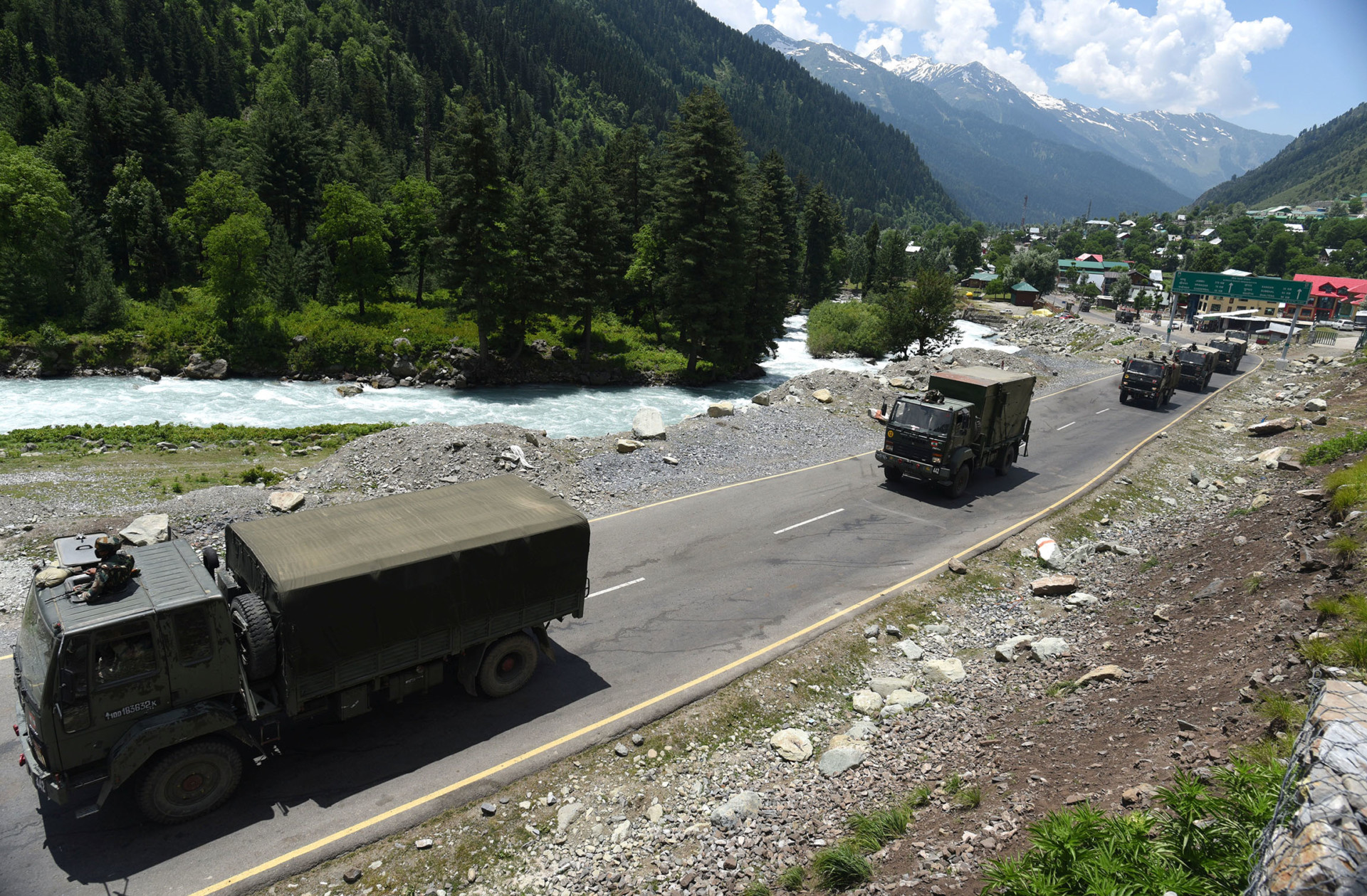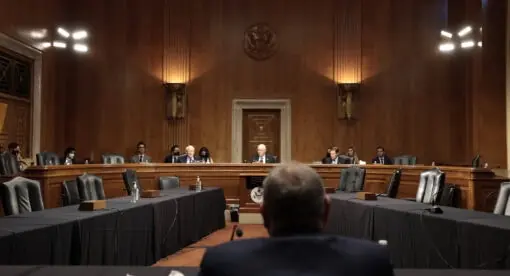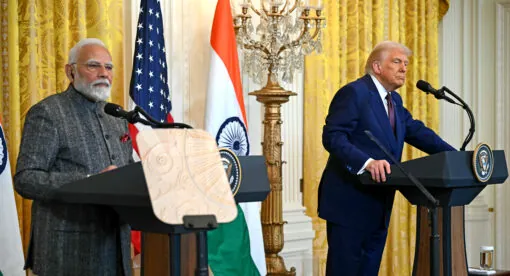After decades as a bilateral conflict between the two South Asian nuclear rival nations, India and Pakistan, Kashmir has now become a triangular geopolitical dispute. The clashes between Chinese and Indian forces in the eastern Kashmiri region of Ladakh have created a two-front battlespace for India. Chinese incursions into Indian-administered territory will embolden Pakistan to up its support for Kashmiri separatists, which will greatly aggravate the struggle over the disputed region. From the U.S. perspective, there is an opportunity to align with India to try to gain advantage over a China that has increasingly become a challenge. However, there are also risks of further insecurity and instability in the region.

Vague Details but a Definite Escalation
Indian officials announced June 16 that at least 20 of their soldiers, including a colonel, were killed and over 100 more injured in a clash with Chinese troops in the Galwan Valley on the Line of Actual Control (LAC) – the border separating the Ladakh region of Indian-administered Kashmir and China’s Xinjiang and Tibet regions. China has not said anything about its casualties and thus far has not provided its account of what transpired in this high-altitude conflict zone; it has given only a superficial account of what happened after the two sides agreed to de-escalate an ongoing standoff. India’s prime minister, Narendra Modi, in a June 17 televised statement said his country sought peace but warned that it was “capable of giving a fitting reply, be it any kind of situation.”
This is the first incident of fighting between the two sides in Kashmir since 1967, when skirmishes reportedly left scores of dead on both sides — five years after the 1962 Sino-Indian war that ended in China’s favor. But what is most peculiar about this entire matter is that apparently the clashes did not involve any military weapons. “They hit our boys on the head with metal batons wrapped in barbed wire. Our boys fought with bare hands,” is how one unnamed senior Indian military official recounted the incident to the BBC. The official said some 300 Chinese, part of what he described as a “death squad,” pounced upon Indian soldiers.
The only public statement from the Chinese side comes from China’s People’s Liberation Army that blamed the incident on what it referred to as “provocative actions” of India. In a statement on China’s Ministry of Defense website, Zhang Shuili, the spokesman of the Western Theater insisted that “the sovereignty of the Galwan Valley region has always belonged to China.” Shuili claimed that Indian forces “crossed the borderline for illegal activities and deliberately launched provocative attacks,” which resulted in a “serious physical conflict between the two sides.”
While the tactical details of the clash remain murky, there is no doubt that it represents a major escalation between the two countries. The last significant event between the world’s two most populous nations was a casualty-free, 73-day standoff in 2017 in the Doklam plateau, a region along the tri-border area between China, India, and Bhutan. India-China border disputes exist at various points across the entire 2,520-mile-long Himalayan boundary that runs from the Arunachal Pradesh- Nyingchi in the east near Myanmar to the Ladakh Aksai-Chin region in the west near Pakistan — but it is this western border region that is tied to broader geopolitical dynamics in southwest Asia.
The Two Kashmiri Conflicts
When most people think of Kashmir, the first thing that comes to mind is the India-Pakistan conflict because the dispute over the region has mostly been between New Delhi and Islamabad. Indeed, most of the violence — including wars in 1947-48, 1965, 1971 and 1999 — has been along the Line of Control (LOC) that separates Pakistan’s Azad Jammu and Kashmir and Gilgit-Baltistan regions from the Indian state of Jammu and Kashmir. Since 1989, fighters belonging to different Pakistan-based Islamist militant groups (often with the assistance of Islamabad) have been crossing the LOC in an effort to exploit Muslim separatism on the Indian side through insurgency and terrorism. They have even staged attacks well beyond Kashmir in major urban centers such as Mumbai and New Delhi and military bases elsewhere. This has brought India and Pakistan to the brink of war in 2002, 2008, 2016, and 2019.
In sharp contrast, the LAC separating the Indian- and Chinese-controlled parts of Kashmir has remained calm even though since the 1962 war, both sides have been steadily fortifying their military positions, especially through the construction of roads and other facilities. But the June clash along the LAC means the Kashmir dispute is no longer simply a function of India-Pakistan bilateral relations. Understanding this battlespace requires a consideration of India’s constraints and imperatives. From the Indian point of view, New Delhi is now faced with the challenge of simultaneously defending its territory from both Pakistan and China.
There is already a great deal of domestic criticism within India over the clash with the Chinese, which is being called an intelligence failure because of a sense that the Indians were caught off-guard. The Modi government is under considerable pressure to respond to the deaths of as many as two dozen troops. This clash comes shortly after the Modi administration revoked the status of Kashmir as an autonomous region and split what it used to refer to as the state of Jammu and Kashmir into the union territories of Jammu and Kashmir and Ladakh. The move set-off a domestic and international backlash as New Delhi placed the entire region under lockdown.
The separation of Ladakh from Jammu and Kashmir was a way for New Delhi to try to better manage the restive region and deal with the dispute with Pakistan. But it appears to have triggered Chinese concerns about the future of their control over large parts of Ladakh. Beijing is not just reacting to New Delhi’s strategic move to reorganize the largest chunk of Kashmir, which is under India’s control. The Indian military has been building roads and bridges along a large segment of the LAC that separates Chinese-held parts of Kashmir from those under Indian-administration — moves that Beijing feels are likely part of New Delhi’s efforts to weaken the Chinese position in Aksai Chin.
In any case, the deadly Indo-Chinese clash in the Galwan Valley has shattered the general state of calm that had existed along the LAC and plunged India and China into uncharted territory . According to a military assessment by a prominent former Indian three-star turned strategic analyst, Retired Lt. Gen. H.S. Panag, the clash took place because Chinese forces have pushed beyond the LAC and now occupy additional Indian territory that most importantly includes several strategic peaks. While there is no comparison between the volume and intensity of violence along the LOC between India and Pakistan with the LAC, from an Indian point of view it can no longer afford to treat the LAC as it has thus far. In some ways, as far as Kashmir is concerned, India must now deal with two hostile borders.
India Between China & Pakistan
China has been the traditional ally of India’s principal foe, Pakistan. For decades, the Chinese avoided getting into the India-Pakistan spat over Kashmir — even as Beijing had its own border issues with India in the region. China not only controls significant chunks of territory all along the eastern rim of Kashmir, it also has been in control of large chunks of area in the north-central part of the former princely state of Kashmir that existed during British rule in India. Making matters worse was Pakistan’s 1963 move to cede to China the Shaksgam Valley, which the Pakistanis gained control of in the 1947-48 war with India.
India long took comfort in the assumption that when it came to Kashmir, China was not going to get involved. However, since at least 2013, China has upgraded its relationship with Pakistan through the $62 billion China-Pakistan Economic Corridor — the largest investment of Beijing’s international Belt & Road Initiative. The corridor’s starting point is in China’s Xinjiang province and runs through Pakistan-controlled Kashmir and from there throughout the length of Pakistan’s geography to the Arabian Sea port of Gwadar, which also is under Chinese management. Thus, India has been increasingly concerned about the rapidly growing alignment between China and Pakistani and how that impacts New Delhi’s conflict with Islamabad, particularly over Kashmir.
Also significant is that the unprecedented June clash took place in an area in Kashmir along the LAC that is not too far from the LOC, especially the Kargil sector — the scene of the 1999 mini-war between India and Pakistan – so there is a sense of history repeating itself. The difference is that 21 years ago, Pakistani forces supported by irregulars crossed the LOC and occupied heights, whereas in the most recent incident, Chinese troops crossed the LAC to occupy two different areas along the LAC in the Ladakh area.
The Galwan Valley is also not far from the Siachen Glacier, which Indian forces took control of in 1984 by taking advantage of the fact that the LOC that far north was ambiguous. Siachen has been the scene of a decades-long stand-off between Indian and Pakistan troops and represents the highest-elevation battlefield on the planet. By gaining control over it, India not only gained an advantage over Pakistan but also the ability to monitor Chinese movements in the Shaksgam Valley, which it could not before then. This is why the Indians are worried that the Chinese moves in Galwan Valley threaten to undermine the Indian position in this complicated conflict zone. More importantly, the extent to which China and Pakistan are collaborating on Kashmir is, understandably, a key question on the minds of Indian decision-makers as they move to respond to the situation.
At the very least, the Chinese moves on the LAC embolden Pakistan to take greater risks on the LOC. From Pakistan’s perspective, China and India fighting over Kashmir is a historic opportunity that it would want to leverage to the maximum possible extent. The Indians have to factor this into their long-term military planning. It will involve allocation of greater resources to the LAC, which means it will have to contend with less on the LOC. The details of how this new emerging dynamic in Kashmir unfolds are unclear. What isn’t is the fact that the ball is now in India’s court to respond to the Chinese move and in a way that doesn’t also cause it to lower its guard on the front with Pakistan.
Tensions in Kashmir are increasing at a time when the United States has been trying to manage the challenge from China, as well as dealing with the COVID-19 epidemic and domestic unrest ahead of a presidential election. Washington needs to come up with a net assessment on this emerging three-player battlespace that has taken even close observers by surprise. It is indeed an opportunity to try to counter China, which will require aligning with India. But it must be done in a manner that does not create more problems than it solves, especially on the India-Pakistan front, which is linked to the U.S. disengagement from Afghanistan.
China’s rapidly growing involvement in the India-Pakistan dynamic, especially now in Kashmir, undermines the U.S. interest to maintain a balance of power between India and Pakistan as Washington is in the midst of bringing closure to the war in Afghanistan. In order to ensure a strategic equilibrium in South Asia and maintain a security architecture in a post-American Afghanistan, the United States will need to work more closely with both India and Pakistan. This is the key prerequisite to using the India-China conflict to counter Beijing on its southern flank.
Dr. Kamran Bokhari is the Director of Analytical Development at the Newlines Institute. Dr. Bokhari is also a national security and foreign policy specialist at the University of Ottawa’s Professional Development Institute. Bokhari has served as the coordinator for Central Asia Studies at the State Department’s Foreign Service Institute (FSI). Follow him on Twitter at @KamranBokhari.
The views expressed in this article are those of the author and not an official policy or position of the Newlines Institute.






